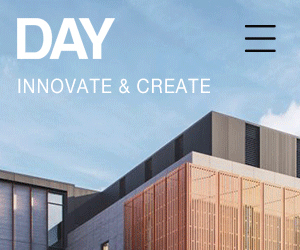Technology is critical to building an efficient and more future-proof NHS that can keep up with today’s changing customer demands. Tony Rich of Unify explains how automation can help discharge healthy patients faster and ease pressures on staff
Every single day, the NHS is faced with numerous challenges.
Solving everything is close to impossible, but we have to make a start — one that could lead to dramatic changes
Whether this is backlogs, inefficiencies, budget or administrative burdens; there are thousands of issues hindering nearly every aspect of such a complex organisation.
It is these issues, among many others of course, that hold back the NHS from doing what it was created to do: helping, supporting and saving people.
As with many things in life, this is easier said than done. There is no magic wand to wave and miraculously solve everything hindering the organisation. Instead, what is required is a thoughtful, intelligent use of technology to help ease its woes.
Solving everything is close to impossible, but we have to make a start — one that could lead to dramatic changes.
If this is achieved and gains are made, it will not only reduce pressure on staff, but also speed up patient recovery time. So, what can be done?
Silencing stress
First off, we need to look at reducing stress. Why? Because, according to studies, re-admission is more common in patients with high stress than those with lower levels.
Whether it is to attend an impromptu seminar, or get advice from a colleague; communication and collaboration technology can make the world a smaller place
In other words, the quicker a hospital can treat someone — as well as avoiding re-admissions due to a calm environment — the better the organisation will perform in the long term, as beds can be freed up for serious cases and the hospital environment can become more relaxed.
In fact, NHS Improvement has stated that the NHS will need to free up 2,000 to 3,000 acute beds to ensure safe care this winter — making stress reduction a critical point for success. This should be done by any means possible, including through digitisation.
Advance through automation
Think back to when you were last stressed. It could be for a variety of reasons, but I would put money on part of it arising from a perceived lack of control. A dearth of information, if you will. This same issue must be confronted in healthcare organisations.
As a medical professional, it can be tough to keep track of patients — especially in tense, fast-paced situations. If someone is unable to quickly recall information, this can be stressful for both the professional and the patient.
Automation can be a saviour in this circumstance. Having a system where patient information can be automatically delivered, especially if this is to do with the right time to discharge an individual, can be phenomenally helpful. This means that staff can concentrate on healing, rather than the administrative duties of signing someone out.
There is huge scope for both cost-savings and efficiency growth. The tools are out there, they just have to be used
The benefits do not stop there though. By using an automated operator and intelligent switchboard, calls can be routed to the required individually internally, ensuring the right person gets the right message. It also frees up operators to deal with critical external calls.
Crafting communication
Ensuring that people within a hospital environment can communicate efficiently is vital. Let’s think about it this way. Technology might not be able to turn an NHS dinner into the Ritz, but it can make the whole process much more streamlined.
Instead of ticking a piece of paper that staff have to hand out and collect, why not make use of more modern tools? For example, get patients to text their choice, or select it through a menu on the television. A small investment now can pay dividends for years to come.
More than a meeting
Another avenue NHS organisations should look down is investing in communication and collaboration tools. This can include a variety of technology, but its key components include tools like video conferencing and virtual meetings.
This can be a huge productivity boost for time-poor staff. Not only can it make attending internal meetings easier — especially when healthcare staff are running around visiting patients — but it also makes communicating with experts at different organisations possible.
Whether it is to attend an impromptu seminar, or get advice from a colleague; communication and collaboration technology can make the world a smaller place.
quotation text of a paragraph we might place left of centre
Although the NHS is under huge amounts of pressure, there is a way this can be alleviated: technology.
With investment now, the organisation can reap benefits for years to come.
Whether this involves improving communication channels, involving automation, or simply making everything more mobile friendly; there is huge scope for both cost-savings and efficiency growth. The tools are out there, they just have to be used.




